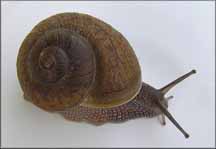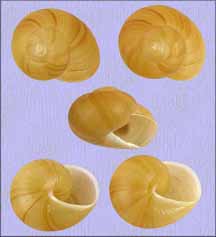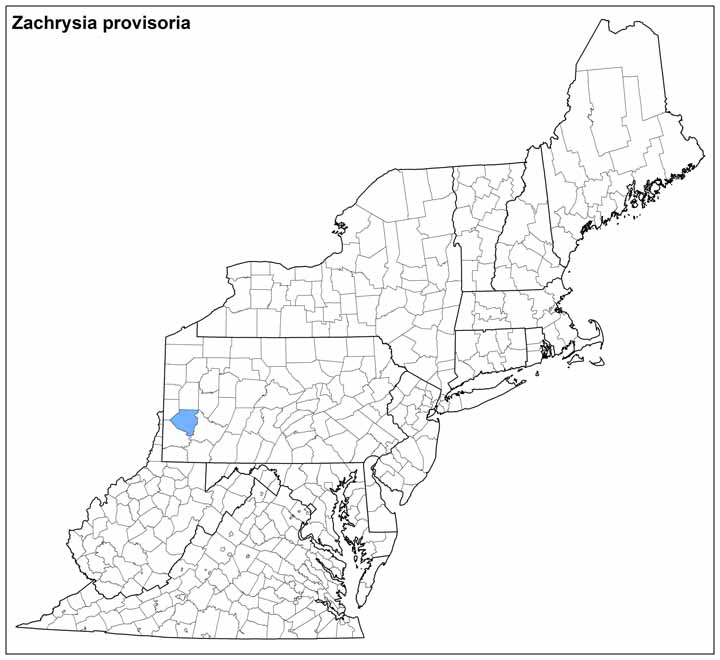Land Snails


Photos: Zachrysia provisoria animal and views of the shell © Bill Frank.
Zachrysia provisoria (Pfeiffer, 1858) (non-native)
Family: Camaenidae
Common name: Garden Zachrysia, Cuban Zachrysia
Identification
Width: ~25-32 mm
Height: ~20 mm
Whorls: 4-5
Zachrysia provisoria has a rounded shell, brownish to rust in color, with very convex whorls. It has a slightly-reflected lip, a closed umbilicus, and is sculptured with regular, radial riblets. The live animal is light gray below, darker and browner above. This species is very similar to Z. trinitaria (Pfeiffer, 1858), which is larger (up to 45 mm), and internally has a shorter flagellum on its penis (White-McLean, 2011).
Ecology
Zachrysia provisoria has importance as a potential pest species in the U.S., ranking 15th of 46 species in a preliminary threat assessment (Cowie et al., 2009). It is major plant pest in Florida (e.g. Auffenberg and Stange, 1993).
In laboratory experiments, young Z. provisoria grew best while consuming Romaine lettuce (Capinera, 2014). Although the young snails ate many of the 24 different plants they were offered, they only grew successfully upon seven species. Though they sometimes damage ornamental gardens or flowerbeds, this species may rely more upon wild vegetation for its success (Capinera).
This land snail, along with some other native and introduced snail species in the Southeast, is an intermediate host of the rat lungworm Angiostrongylus cantonensis, which can cause meningitis in people (Stockdale Walden et al., 2015; Stockdale Walden et al., 2017).
Taxonomy
Synonyms are Helix provisoria, H. appendiculata, and H. auracoma (White-McLean, 2011).
Distribution
Zachrysia provisoria is native to Cuba, and introduced to several Caribbean islands and Florida. In the Northeast Region it has been found in the Pittsburgh Zoo’s (PA) rainforest exhibit, probably spread via tropical nursery plants from Florida (Tim Pearce, pers. comm., 2017).
Conservation
NatureServe Rank: G5, Secure.
While this snail may not be able to tolerate the Northeast region’s temperate climate outdoors, it could be spread by plant nurseries or the pet trade. Its potential to transmit rat lungworm to people or domestic animals should also be a concern.
Ken Hotopp 12/2017
Range Map (click to enlarge)



